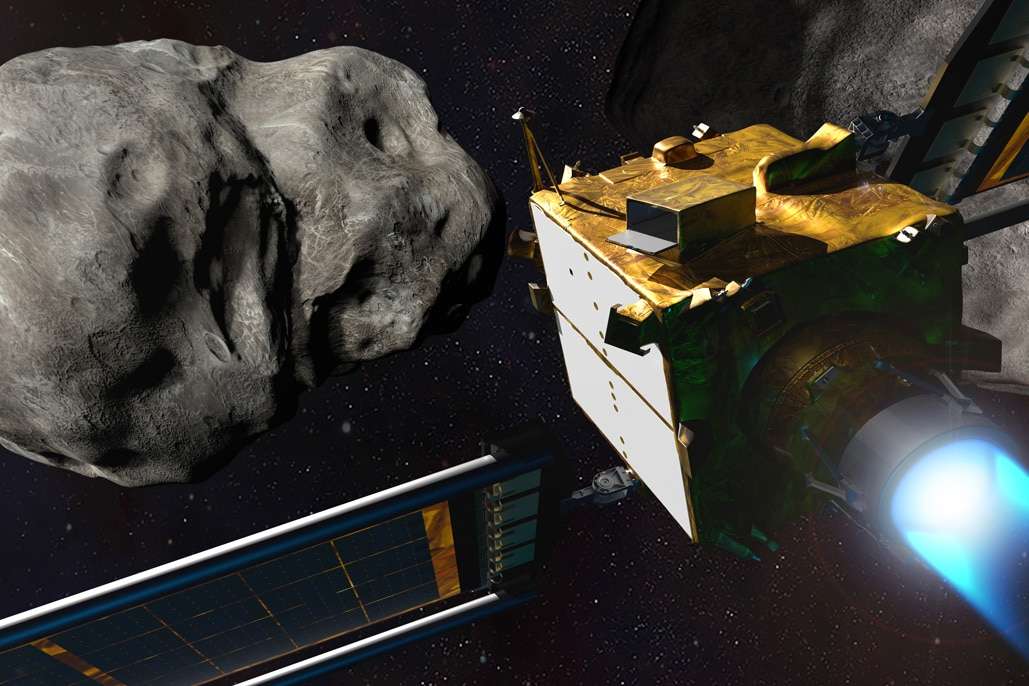Last month, NASA slammed a spacecraft into the heart of a nearby asteroid, resetting its orbit and conducting the agency’s first planetary defense mission.
There’s a new tool to help blow up asteroids

In a paper published on Wednesday, scientists unveiled a method to map the inside of an asteroid in ways that better calculate the crater’s density and spin. Knowing that could help provide a more accurate hit, researchers said.
“If you know the density distribution of the asteroid, you could hit it at just the right spot so it actually moves away,” said Jack Dinsmore, a lead researcher on the study who is now at Stanford University.
The team is looking to test this analysis method on an asteroid near Earth called Apophis. Though scientists have ruled out the likelihood it will collide with Earth for another century, if it did impact, the effects could be severe.
“Apophis will miss Earth in 2029 … but we can’t clear it forever,” Dinsmore said. “It’s good to understand the nature of this particular asteroid, because if we ever need to redirect it, it’s important to understand what it’s made of.”
Scientists, space agencies and Hollywood have long imagined what would happen if an asteroid collided with Earth. In September, NASA conducted a Double Asteroid Redirection Test to see if it could knock an asteroid from a collision course with Earth if it ever needed to.
The mission aimed a spacecraft at an asteroid named Dimorphos. It tested whether sending an spacecraft called a kinetic impactor could strike an oncoming asteroid with enough punch to knock it off course. The test was successful and knocked the asteroid into a new orbit.
Dinsmore’s method originated before that mission, while he was at MIT, and was borne out of a simple question: “What happens when an asteroid passes by Earth? Does it respond at all?”
He wrote computer code that simulated the various shapes and sizes of asteroids, including how their orbit and spin changed when influenced by the gravitational pull of large objects, like Earth. That led him to wonder if the data could help predict an asteroid’s shape and size.
Dinsmore partnered with MIT assistant professor Julien de Wit, and together they wrote more complex computer code to simulate the characteristics of a variety of asteroids, mapping out their various shapes, sizes and density. They were also able to calculate how much an asteroid would spin or wobble as it passed large objects, allowing them to more clearly understand what it was composed of.
“It’s similar to how you can tell the difference between a raw and boiled egg,” de Wit said. “If you spin the egg, the egg responds and spins differently depending on its interior properties. The same goes for an asteroid during a close encounter: You can get a grasp of what’s happening on the inside just by looking on how it responds to the strong gravitational forces it experiences during a flyby.”
They have packaged that code into a software tool kit called Asteroid Interior Mapping from Encounters (AIME). They envision the software will allow scientists to better map the inside of an asteroid by analyzing how it spins during a close encounter with a large object, and thereby aiding future asteroid targeting missions by finding a better place to slam into it.
The best chance to test this method out, scientists said, was with Apophis. The next time the asteroid is passing by Earth, astronomers could aim their telescopes at it to measure its size, shape and spin rate, the team said. They could then put these figures into AIME and find an asteroid with similar properties and devise a plan to better target it off a collision course with Earth.
“Understanding the interior … helps us understand the extent to which close encounters could be of concern,” de Wit said, “and how to deal with them.”






